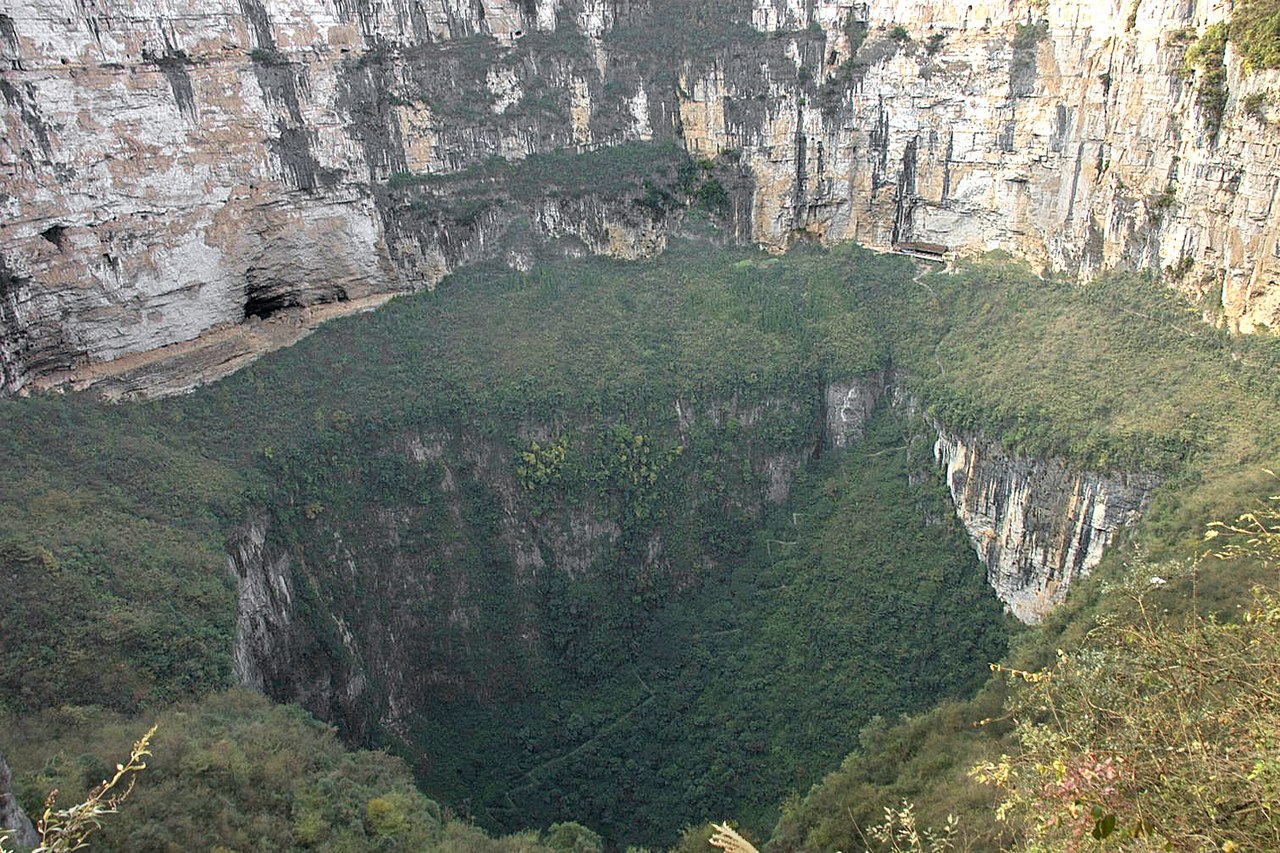What is a Sinkhole?
by Andrew Lees, on March 15, 2023
A sinkhole is a depression or cavity caused by collapse of the surface layer due to loss of support from below. If the surface layers are sandy, they will slump into the void below and the surface depression will widen gradually over time. However, if the surface layers are cohesive, they can bridge over the expanding void below and then suddenly collapse. Sinkholes can vary in size from a slight depression to a massive hole, tens of metres across. The deepest sinkhole is in Chongching, China. Known as the ‘Heavenly Pit’ it is 537m wide, 662m deep and has a volume equal to 48,000 Olympic size swimming pools.
Here for something specific? Use the links below to find what you're looking for.
- What is a sinkhole?
- How do sinkholes form?
- What leads to collapse of a sinkhole?
- What are the warning signs of sinkhole formation?
- Identifying sinkholes before they collapse
- Repair of sinkholes
- Mitigating against sinkhole collapse
.jpg)
The "Heavenly Pit" in Chongqing, China is the deepest sinkhole in the world.
(Source: Wikipedia)
How do sinkholes form?
Most sinkholes form as a result of natural processes that remove rock below the surface layer. Where the bedrock is a limestone, other carbonate, salt beds or other soluble rock (such as gypsum), groundwater percolating through fissures can dissolve the rock and flush it away. Rainwater absorbs carbon dioxide creating a weak carbonic acid that attacks the alkaline rock. Sandstone and quartzite rocks can also be removed by dissolution of the carbonate cement holding the granular particles together, followed by erosion of the lose particles.
Other causes of sinkholes can be man-made, such as a change in water table due to mining, groundwater extraction, or by erosion of subsurface material (due to a burst water main or leaking pipework for example).
\Andrew Lees visits a sinkhole at a major highway in South Africa and explains how they occur.
What leads to collapse of a sinkhole?
A void below the surface can form rapidly, but in most instances will take many years to develop. Cohesive or cemented granular surface layers can form a bridge over the void giving no indication that a void has formed beneath, but a trigger event will eventually lead to collapse. This trigger can be a major rainfall event, a change in surface drainage, the emptying of a storage tank or even heavy irrigation. Such events saturate and weaken the surface layer, leading to collapse into the void.
What are the warning signs of sinkhole formation?
There may be visual warnings of the slow development or imminent collapse of a sinkhole: depressions forming in the ground or new surface water ponding are a clear indication of subsoil movement; buried pipes may show signs of damage; utilities might be disrupted; pylons, posts or trees may become tilted; building or concrete floor slabs may show signs of cracking, or windows and doors will stop closing. All or these may be tell-tales for a developing sinkhole.
.jpg)
Water ponding in a depression forming over old mineworking
(Source: Geoinvestigate, UK)
.jpg)
Block paving depression indicating presence of a small sinkhole
(Source: Geoinvestigate, UK)
Identifying sinkholes before they collapse
For any new development, a study of geological maps can identify areas susceptible to sinkhole formation, but not the location of a specific void. Deep boreholes may identify a void, but can also easily miss a problem. Newer techniques have become available such as ground penetrating radar, low frequency and passive electromagnetic field technologies and vibro-acoustics, although these all require specialist geotechnical expertise in order to carry out and interpret the data. Displacement measurement using satellite remote sensing can also identify developing sinkholes, with the potential to provide early warning services for key infrastructure.
Repair of sinkholes
When developing sinkholes are detected - or following collapse - steps can be taken to prevent full collapse or further enlargement. The steps will usually involve filling the void and surrounding fissures with grout or cementitious material, or if the void opening is not too large, capping over the void with a reinforced concrete slab.
Mitigating against sinkhole collapse
In areas designated for new construction that have been identified as having the potential for sinkholes, prevention by grouting or filling all voids prior to infrastructure development may be a solution. Where this is not practical, some form of mitigation against rapid collapse may be employed, where the objective is not to prevent collapse, but to avoid a rapid and potentially catastrophic collapse. Whatever solution is to be employed, the design will need to be carried out by specialist engineers following extensive ground investigation.



-(1).png?width=400&height=400&ext=.png)